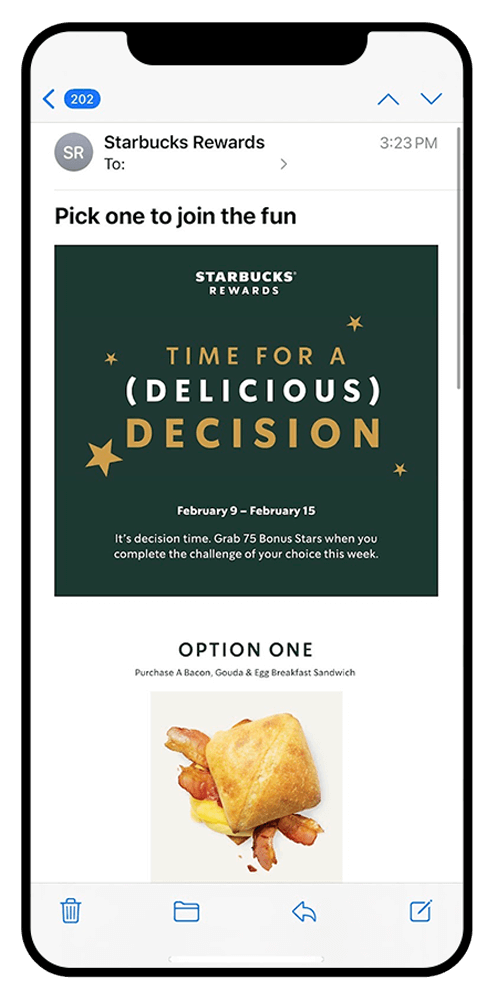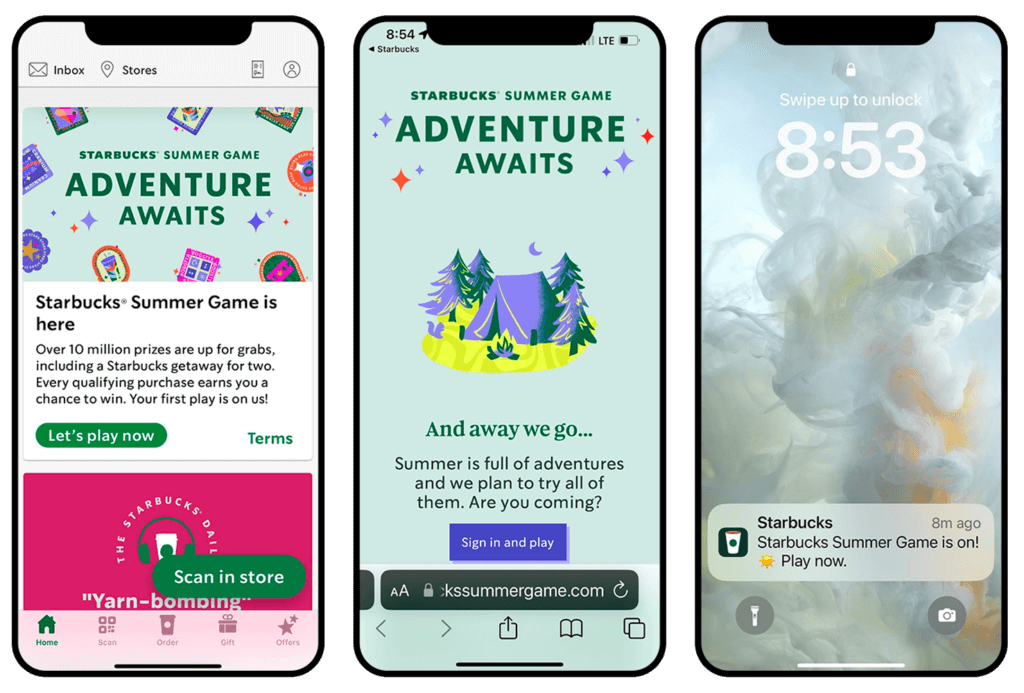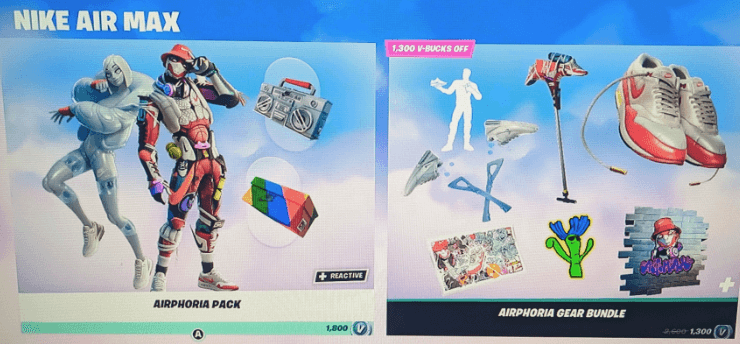When To Play And How To Win

Sandra Wroe Senior Strat Consultant Airship
Consumers’ reliance on mobile devices and their immersion in social media have changed the way they interact with content and brands. Instead of carving out a set time to go shopping or read the news, consumers’ interactions with brands are short, focused and transactional — often referred to as “content snacking.” This change in consumer behavior has challenged brands in how they build deep engagement and enduring loyalty.
Content snacking aligns well with the excitement, challenge and rewards associated with games. We expect this for millennials and Gen Z, who have lived their entire lives with technology, but mobile has impacted the behavior of all generations. That’s why gamification is becoming increasingly popular with brands across a range of app verticals and consumer segments.
But which gamification tactics and strategies are right for you? When you consider the different types of gamification, it’s essential you determine how each one will tie into your targeted business outcomes. Gamification serves to motivate users to take high-value actions, but different actions lend themselves naturally to different gamification tactics.
To choose your gamification strategy and tactics, think of games through the lens of your app monetization model (commerce, ad revenue, subscription or utility), brand values and app value proposition — and don’t forget to consider what’s in it for the customer.
App monetization model
What constitutes a high-value action will depend on your app monetization model:
Commerce
Commerce apps have a clear opportunity to link purchases to points and reward users from there on out — even without a full-fledged loyalty program. To nudge users toward the purchase, motivate other high-value actions, such as setting preferences or creating a wishlist.
Combining gamification with user benefit is a powerful combination to drive your desired outcomes. For example, if you get a customer to save their clothing size in their profile, they won’t have to look at offerings unavailable in their size, which improves their experience and makes a purchase more likely.
Profile building can help them make a selection and show more items they might like (hello, AI), and these are actions easily rewarded through gamification. Motivate users to complete profiles by awarding them a higher status level, with early access to sales, for example, or consider badges as visual distinctions. Other ways of making product selection more fun include interactive quizzes and augmented reality for virtual try-on.
Getting started with gamification for commerce:
- Beginner: Send users a promo code if they complete their profile, or run a competition for users who create a wishlist to let them win items from it.
- Intermediate: Introduce a loyalty program that rewards users based on their purchases, and occasionally run “double points” campaigns to create spikes in interest
- Advanced: Create personalized challenges based on purchase behavior that a user can complete in return for more points, e.g., buying four cold drinks this week instead of their usual three, or adding on one snack.
Subscription or Ad Revenue
Driving repeat visits and the consumption of content is key for content-based apps. To drive these habits, gamification strategies might include streaks and progress bars, as well as exclusive content and access. This in turn can be leveraged to drive engagement with the customer while they’re not in the app, such as informing them if they’re about to lose their streak or congratulating them if they hit a new achievement level. Freemium apps, or paid subscription apps with free trials, can also leverage gamification to drive high-value actions during the crucial onboarding period.
Getting started with gamification for subscription and ad revenue based apps:
- Beginner: Run a short-term campaign showing a quiz question in the app every day of the week, and reward customers who get all answers right.
- Intermediate: Send personalized progress or usage updates, highlighting what the customer has enjoyed, learned or achieved over the past year. Reward a high-value action during the onboarding period: for example, if a new customer on the free plan purchases a stock, offer them a month of the premium investor plan for more benefits.
- Advanced: Implement levels, badges and automated streak communications to continuously drive customers back into your app. Offer customers a way to repair a broken winning streak to prevent dropoff.
Utility
Typically designed so a customer can complete functional actions that need to be taken and to send them updates on a specific service, progress bars are the best fit for gamification in this category. Utility apps include telcos and electricity providers, but can also include scheduling apps for booking health and beauty appointments and weather apps.
Getting started with gamification for utility apps:
- Beginner: Send positive reinforcement messaging and visuals once a customer has completed a task (“You rock!”).
- Intermediate: Show the customer’s tenure, highlight completed tasks and let them choose their own reward on renewal.
- Advanced: On a leaderboard, show who saved the most energy or cycled the most miles. Let the customer create a personalized avatar that gets better as they progress — for example, unlocking more outfits, bigger weapons or fun accessories.
Brand Values & App Proposition
Find types of gamification that have a natural fit with your brand’s overall values and keep the focus on the particular value your app provides. For example, for a sustainable climate-friendly product, create educational games that convey the rationale behind your production methods. A “spin to win a holiday” competition would distract from the value provided by a well-respected news app, but be completely relevant to the value provided by a travel app.
Tying rewards or prizes to your app value proposition should not be viewed as a desperate attempt to get customers’ attention, but rather as key to being relevant and adding value. For commerce and subscription apps, rewards and prizes are fairly straightforward, with discounts or free subscriptions for a set period of time. For news and media apps, rewards and prizes could take the form of exclusive content or unique experiences, such as a meeting with the editor or the opportunity to attend an exclusive event.
Alternatively, engagement with the content itself can be the challenge set, and exclusive content the reward. This creates a natural fit between the app proposition, what you ask customers to do and the relevance of the reward — for example, a second master class free if the customer completes one in January as a New Year’s resolution. Having the challenges and reward content live behind the paywall in a subscription-based app is a way to add more visible value for your paying customers.
Benefits to the Customer
Consider the benefits to your customers, because they certainly will. Does the gamification mechanic have any value for them, or only for you? Consider using gamification to make what a customer wants to do more fun, rather than only as a way of getting what you want. It’s helpful for the customer to be able to try on a new coat using AR, which will also help drive the sale, but asking for a share on Twitter in return for a chance to win feels much more one-directional.
Finally, gamification is not a miracle cure and won’t make up for a poor customer experience or weak app proposition. Use it to make a good app experience even better, not make a poor app experience okay. If there are known app customer pain points, consider redirecting resources into improving your basic app experience, and then return to considering gamification as a way to win back the customers you’ve lost.
Masters of Gamification
We’re already seeing mastery of gamification by leading brands. Starbucks, for example, regularly offers customers the opportunity to earn a fixed number of stars in the loyalty program if they complete challenges. These challenges are heavily personalized and oriented to pushing a specific customer’s behavior in terms of purchase frequency, time of day, total spend amount or menu items.
For example, if you usually only buy drinks, your challenge for Bonus Stars may be to buy a food item this week, or one more drink than you usually buy. These challenges are offered to customers through email or in-app, but your challenge progress is always highlighted on their home screen in the app for high visibility. Additionally, a few times a year Starbucks goes all out with the limited time Summer Game and the infamous digital board game, “Starbucks for Life.” These digital board games allow users to earn “plays” to navigate the game board and win prizes, with the ultimate prize being free Starbucks for life.


Some of the world’s biggest brands are exploring what the future of gamification for engagement could look like beyond their own channels and the games they themselves create. Gamification by definition is the use of game design elements and mechanisms in non-game contexts, but interestingly, a growing number of brands are dipping their toes into collaborations with existing gaming and metaverse platforms. Where Web1 was “write,” Web2 was “read/write,” and Web3 is “read/write/earn,” it’s the “earn” part that’s creating the gamification possibilities in the metaverse. Duolingo, Chipotle, The Home Depot and Nike, to name a few, have all started to explore leveraging the power of these platforms and their massive audiences to their advantage, going far beyond their own apps and owned digital channels.
Paying attention to where your customers are and what they’re doing will also help you capitalize on opportunities. The popular game platform Roblox is one of the most-used metaverse platforms in the world [Source], with over 60 million daily users, half of them over the age of 13. In 2022, when Roblox players organically began creating Duolingo-themed avatars and games in the app, Duolingo partnered with Roblox to launch a “game jam” where players could submit their games to be featured in its virtual Roblox space. Any currency earned in-game could be used to buy virtual Duolingo branded merchandise, such as backpacks or hats. The result: average daily downloads increased by 18% the following week; one month later, Daily Active Users were up 5% from before the partnership [Source].
Source: Apptopia
Similarly, Chipotle created a virtual restaurant and themed game for its 2021 “Boorito” promotion in Roblox. This resulted in 79% more downloads than their promotion the year before without Roblox. Chipotle stayed consistent in the effort and was the first to launch a menu item in the metaverse, with repeated campaigns on Roblox throughout 2022 [Source].
The Home Depot made its first step into the Metaverse in March 2023 by launching a virtual version of its kids’ workshops in the Roblox metaverse. Kids can visit Home Depot’s metaverse storefront in the digital Redcliff City. They choose DIY projects to work on and gather the necessary project materials [Source]. Having filed for trademarks, including NFTs in November last year, The Home Depot’s activity in this space may soon include downloadable digital assets displaying home improvement goods as NFTs, as well as downloadable coupons that are redeemable in both real and virtual worlds [Source].

Image source: https://nftevening.com/the-home-depot-joins-roblox-to-create-a-metaverse-experience/
And in June 2023, Nike teamed up with survival game Fortnite, offering a virtual experience that rewards players with digital sneakers. This “sneaker hunt” was a one-week event aimed at driving engagement and deepening Nike’s connection with fans of its Air Max sneakers [Source].
While the experience of Duolingo, Chipotle, The Home Depot and Nike gives us a glimpse of what the future of brand engagement and web3 gaming could look like, the idea of awarding users with digital assets also opens up a whole new set of challenges for marketers around adoption and regulations for crypto assets — and how these might be mitigated [Source].

With more and more brands looking to leverage gamification by creating their very own games, perhaps the future of gamification lies in the old adage — if you can’t beat them, join them.
For help defining your mobile app strategy, gamification tactics and user experiences, please reach out to your Airship Account Manager. Our Strategic Services can assist you every step of the way.
Subscribe for updates
If the form doesn't render correctly, kindly disable the ad blocker on your browser and refresh the page.